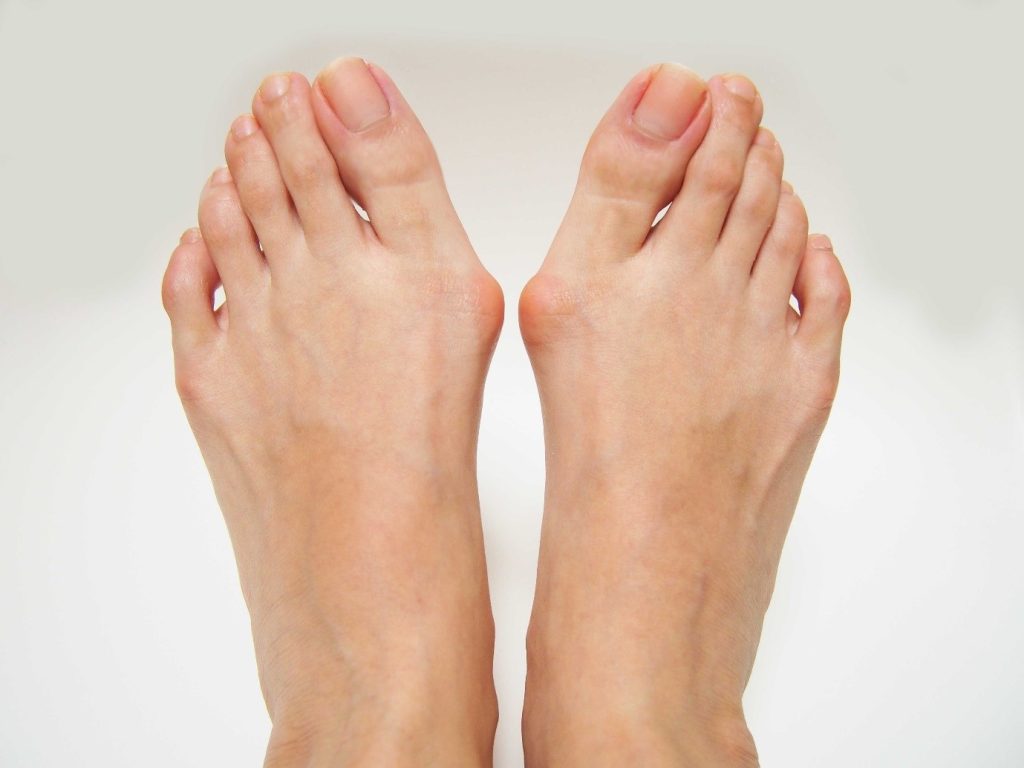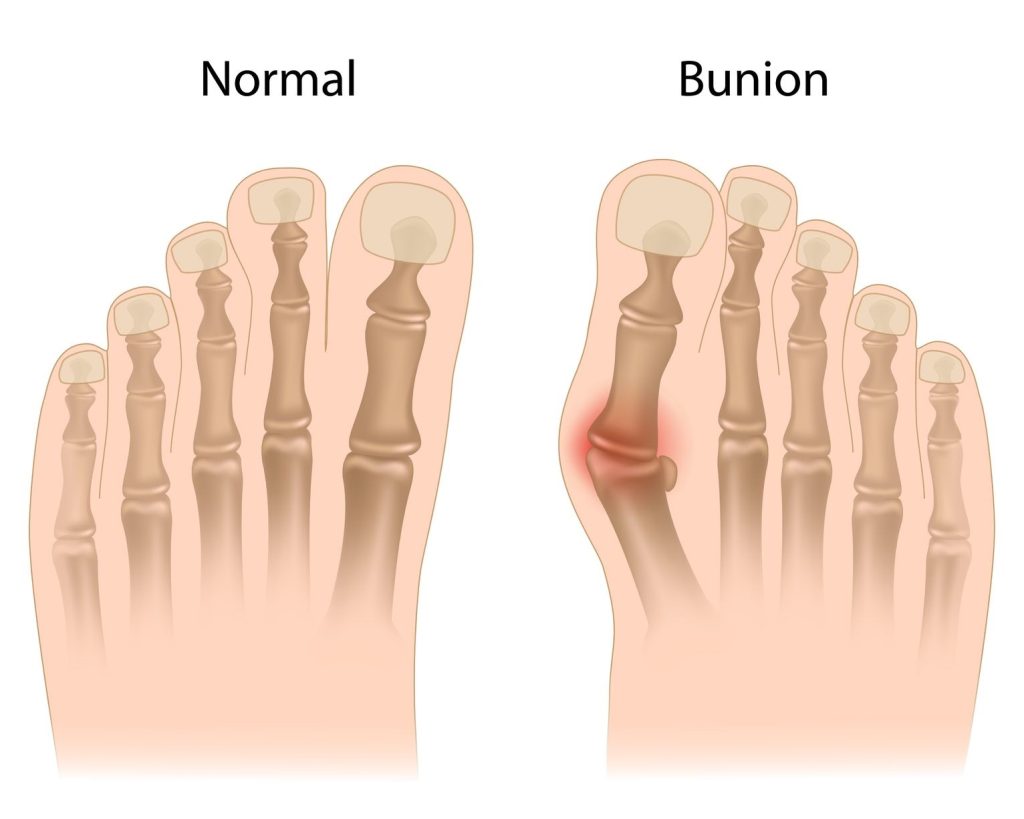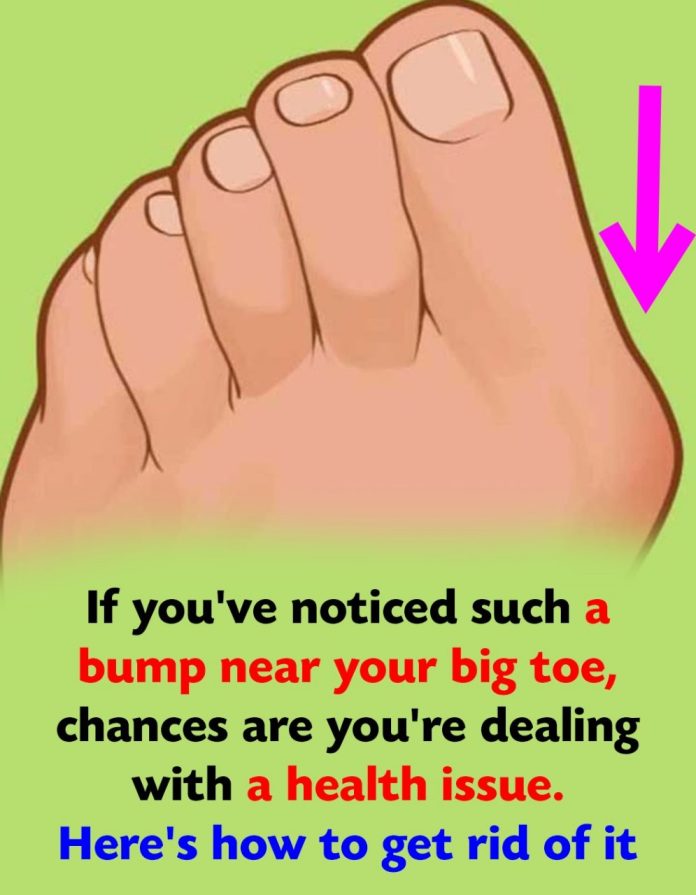A painful, bony bump on the side of your foot can be frustrating, limit your mobility, and make finding comfortable shoes a daily challenge. If you’ve noticed such a protrusion near your big toe, you are likely dealing with a common condition known as a bunion.
What Is a Bunion?
A bunion, medically referred to as hallux valgus, is a bony enlargement that forms at the joint where the big toe meets the foot. It occurs when the big toe gradually leans toward the second toe, forcing the joint to jut outward. This misalignment often causes pain, swelling, and inflammation and can lead to arthritis in the affected joint over time.
Although some individuals are genetically predisposed to bunions due to their foot structure, lifestyle factors also play a significant role. Ill-fitting shoes, particularly those with narrow toe boxes or high heels, can contribute to bunion formation. Left untreated, the condition may worsen, leading to increased discomfort and restricted mobility.

Signs and Symptoms of Bunions
The primary indication of a bunion is a visible, bony bump on the side of the foot at the base of the big toe. However, other symptoms may include:
- Persistent pain or tenderness around the joint.
- Swelling and redness in the area.
- Limited movement of the big toe, which may hinder walking.
- Corns or calluses where toes rub against each other due to misalignment.
- Thickened skin at the base of the big toe.
Causes of Bunions
Bunions develop due to uneven pressure on the foot, which leads to joint instability. Common causes include:
- Genetics: Some people inherit foot shapes that are more prone to bunions.
- Footwear Choices: Tight, narrow shoes or high heels increase pressure on the big toe joint.
- Arthritis: Conditions like rheumatoid arthritis can inflame joints and increase susceptibility to bunions.
- Foot Injuries: Trauma to the foot can sometimes lead to bunion formation.
- Flat Feet or Abnormal Gait: These factors create uneven pressure on the feet, worsening bunions.
Treatment and Management Options
Although bunions cannot be reversed without surgery, several measures can alleviate pain, slow progression, and improve daily comfort.
Wear Proper Footwear
- Choose shoes with wide toe boxes that allow toes to spread naturally.
- Avoid high heels and tight-fitting footwear that worsen misalignment.
- Look for cushioned insoles to provide additional support.
Use Bunion Pads or Orthotics
- Over-the-counter bunion pads can reduce friction and alleviate discomfort.
- Custom orthotic devices, prescribed by a podiatrist, can correct foot mechanics and support arches.

Manage Pain and Inflammation
- Use over-the-counter pain relievers like ibuprofen to reduce swelling.
- Apply ice packs for 10-15 minutes to alleviate inflammation and numb pain.
- Consider topical anti-inflammatory creams for localized relief.
Perform Foot Exercises
- Toe Stretches: Pull the big toe gently into alignment and hold for 10 seconds.
- Towel Scrunches: Use your toes to scrunch a towel, strengthening foot muscles.
- Toe Circles: Rotate the big toe to improve flexibility and reduce stiffness.
Try Bunion Splints
Wear splints at night to realign the big toe. While they won’t cure the bunion, they may provide temporary relief and slow progression.
Consider Corticosteroid Injections
For severe pain, a doctor might recommend corticosteroid injections to reduce inflammation.
This is generally a temporary solution for managing persistent discomfort.
Surgical Intervention
Surgery is a last resort for severe cases that don’t respond to other treatments. Procedures include:
- Exostectomy: Removal of the bony bump without realigning the bones.
- Osteotomy: Cutting and realigning the bone to correct misalignment.
- Arthrodesis: Fusing the joint for stability in severe cases.
Recovery involves wearing a surgical shoe or cast, physical therapy, and a gradual return to activities. Surgery effectively eliminates the bunion but comes with risks and downtime.
Preventing Bunions

While not all bunions are preventable, particularly if hereditary, you can take steps to minimize risk:
- Choose Proper Footwear: Opt for shoes with adequate toe space and avoid high heels.
- Use Orthotics: Address flat feet or structural issues to improve foot mechanics.
- Maintain a Healthy Weight: Excess weight increases pressure on the feet.
- Take Breaks: If you’re on your feet often, rest periodically to reduce strain.
By taking proactive measures and seeking early intervention, you can manage bunion discomfort effectively and prevent further complications.

















